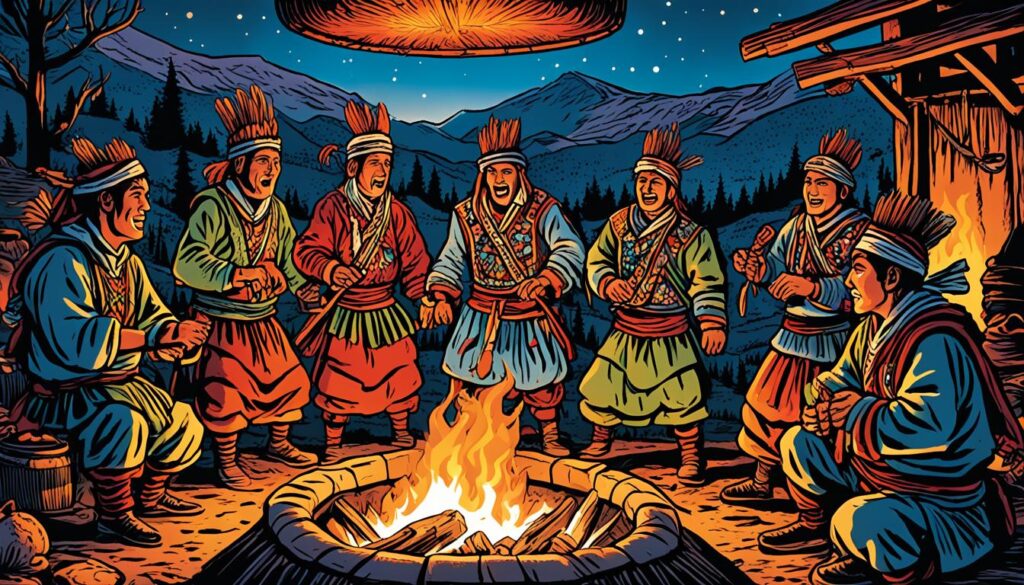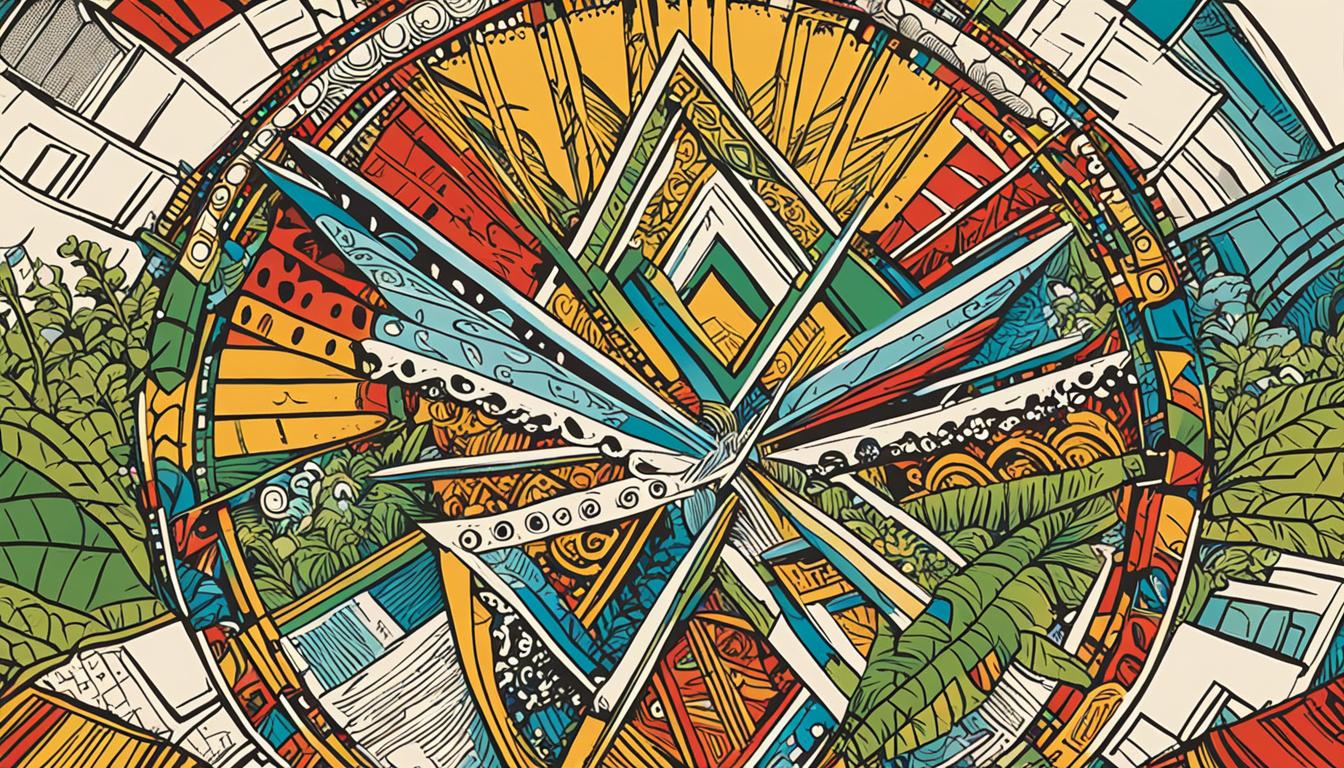Did you know that the Krahô language, spoken by the indigenous Krahô people in Brazil, is teetering on the edge of extinction?
With only approximately 2,000 speakers remaining, the Krahô language is classified as an endangered language, highlighting the urgent need for language preservation efforts. As one of the indigenous languages within the Gê linguistic family, the Krahô language holds immense significance not only for the Krahô people but also for the overall linguistic diversity of Brazilian indigenous tribes.
In this article, we will delve into the cultural significance of the Krahô language, explore linguistic research on this unique language, discuss the challenges of language endangerment, and examine the crucial connection between the Krahô language and the identity of the Krahô people. Join us on this journey to discover the beauty and importance of the Krahô language and learn about the efforts being made to ensure its survival for future generations.
Cultural Significance of the Krahô Language
The Krahô language holds immense cultural significance for the Krahô people. It serves as a powerful tool for transmitting their rich history, traditions, and core values from one generation to another. Beyond everyday communication, the language plays a pivotal role in important cultural rituals and ceremonies, reinforcing their ties to their ancestors and preserving their cultural heritage.
The Krahô language is a symbol of identity and unity among the Krahô people. It not only connects them with their roots but also strengthens the bonds within their community. By speaking their native language, they honor their ancestors, solidify their cultural pride, and maintain a deep sense of belonging.
Moreover, the Krahô language contributes to the linguistic diversity of Brazil. As one of the indigenous languages spoken in the country, it highlights the importance of preserving and respecting the cultural and linguistic heritage of the indigenous communities. Recognizing the value of diverse languages enriches not only the Krahô cultural tapestry but also the overall cultural richness of Brazil.
The Role of Language in Cultural Preservation
“Language is key to our cultural preservation. It carries the essence of who we are as Krahô people. Through our language, we maintain a deep connection with our ancestors and pass down our traditions to future generations.” – Krahô Elder
The Krahô language is a living testament to the resilience of an ancient culture. It encapsulates centuries of knowledge, wisdom, and collective experiences that define the essence of the Krahô people. Its conservation deserves utmost attention, as it represents a critical aspect of safeguarding indigenous cultural heritage and maintaining linguistic diversity.
| Importance of Krahô Language | Linguistic Diversity Preservation |
|---|---|
| Preserves cultural history, traditions, and values | Contributes to the linguistic diversity of Brazil |
| Strengthens community bonds and identity | Highlights the importance of indigenous languages |
| Connects with ancestors and cultural heritage | Enriches the overall cultural richness of Brazil |
| Ensures the survival of an endangered language | Safeguards indigenous cultural heritage |
Linguistic Research on the Krahô Language
Linguists and researchers have been conducting extensive studies on the Krahô language to document its grammar, vocabulary, and phonetics. These research efforts aim to provide valuable insights into the linguistic structure of the Krahô language and uncover its unique features. By documenting indigenous languages like Krahô, linguists play a crucial role in preserving and analyzing these linguistic systems.
Through linguistic research, experts gain a deeper understanding of the diversity and complexity of human language. The documentation of the Krahô language contributes to the broader field of linguistics, enabling researchers to compare and contrast it with other languages. By examining the Krahô language, scholars can unravel the intricate mechanisms that shape communication and shed light on the linguistic evolution of Brazilian indigenous tribes.
“Studying the Krahô language opens up a world of knowledge about the linguistic intricacies associated with indigenous cultures. It allows us to comprehend the cultural nuances embedded within every word and sentence, further enriching our understanding of human communication.” – Dr. Linguist
Linguistic research also serves as a critical tool for language preservation. By meticulously documenting the Krahô language, researchers ensure that future generations have access to this indigenous cultural heritage. The documentation includes creating comprehensive dictionaries, grammar guides, and linguistic databases that capture the essence of the Krahô language.
In addition to preserving the language itself, linguistic research fosters a deeper appreciation for the unique linguistic heritage of the Krahô people. It highlights the importance of indigenous languages in maintaining the cultural and ethnic identities of indigenous communities in Brazil and around the world.
As linguistic research on the Krahô language continues to unfold, it contributes to the ever-expanding knowledge of language diversity and plays a vital role in the ongoing efforts to preserve and celebrate indigenous cultures.

Endangerment and Language Preservation
Like many indigenous languages, the Krahô language is classified as an endangered language. The gradual decline in the number of Krahô language speakers is a significant concern for the preservation of this unique linguistic heritage. The influence of Portuguese, the dominant language in Brazil, has also posed challenges to the survival of the Krahô language.
Fortunately, various individuals and organizations are dedicated to revitalizing and promoting the use of the Krahô language. Krahô communities, linguists, and language preservation organizations have joined forces to implement initiatives aimed at language preservation.
One of the key efforts is the establishment of language classes and community language programs within Krahô communities. These initiatives provide opportunities for the younger generations to learn and practice the Krahô language, ensuring its continued transmission.
Additionally, language preservation organizations are actively involved in the development of language learning materials specifically designed for the Krahô language. These materials include textbooks, audio recordings, and interactive online resources, making language learning more accessible and engaging for both Krahô speakers and learners.
Furthermore, integrating the Krahô language into formal education systems plays a crucial role in its preservation. By incorporating the language into school curricula, educational institutions contribute to the revitalization efforts and create a supportive environment for Krahô language learners.
“Preserving the Krahô language is not just about safeguarding words and grammar; it is about preserving our identity, our culture, and our connection to our ancestors.” – Krahô community elder
The collective efforts of Krahô communities, linguists, and language preservation organizations are instrumental in preserving and revitalizing the Krahô language. Through their dedication and collaboration, the Krahô people are taking proactive steps to ensure the survival of their endangered language and uphold their cultural heritage.
Krahô Language and Identity
For the Krahô people, the Krahô language is not just a means of communication but also a source of ethnic identity and cultural pride. Speaking and preserving their language is seen as crucial for maintaining their unique cultural heritage and traditions.
In addition to the language, other cultural practices, such as art, music, and storytelling, further reinforce their identity as Krahô people. The language serves as a marker of their distinctiveness and helps them foster a sense of belonging within their community.
“Our language is the essence of who we are as Krahô people. It carries our history, our wisdom, and our connection to the land. Without our language, we would lose a part of our identity and cultural pride.”
– Elder of the Krahô community
The Krahô people take great pride in their language and actively work to preserve it for future generations. Language revitalization efforts, such as language classes and cultural programs, are undertaken to ensure the continued transmission of their linguistic and cultural heritage.
Importance of Cultural Practices
In addition to speaking their language, the Krahô people engage in various cultural practices that strengthen their sense of identity. These practices, such as traditional art forms, music, and storytelling, play a crucial role in connecting the past with the present and transmitting cultural knowledge.
The Krahô people believe that their language and cultural practices work hand in hand to uphold their cultural pride and ethnic identity. Through their language and cultural expressions, they assert their presence and assert the importance of their unique heritage within a diverse Brazilian society.

Preserving Identity through Language
Language is intertwined with the collective memory and history of the Krahô people. It embodies their connection to the land, their ancestors, and their indigenous roots. By preserving their language, the Krahô people ensure that their ethnic identity and cultural pride continue to thrive.
Furthermore, speaking the Krahô language allows the community to maintain a deep connection with their elders and the wisdom they impart. It is a testament to their resilience as they navigate the challenges of modernity while keeping their cultural heritage alive.
Conclusion
The Krahô language, spoken by the indigenous Krahô people in Brazil, is not only a linguistic treasure but also a significant aspect of their cultural heritage. With its close ties to the Gê linguistic family and its role in transmitting the history, traditions, and values of the Krahô people, this endangered language holds immense importance.
Preservation efforts aimed at reviving and promoting the use of the Krahô language are essential. These initiatives help ensure the survival of this linguistic gem and contribute to the overall linguistic diversity of Brazil. By valuing and supporting the Krahô language, we can protect indigenous culture and celebrate the rich heritage of the Krahô people.
Language preservation plays a vital role in maintaining the cultural identity of indigenous communities. The Krahô language, with its unique grammar, vocabulary, and phonetics, provides valuable insights into linguistic research. Documenting and analyzing indigenous languages like Krahô not only helps researchers understand human language diversity but also encourages respect for linguistic and cultural differences.
In conclusion, by recognizing the importance of the Krahô language and actively working towards its preservation, we can contribute to the ongoing efforts of language revitalization, promote linguistic diversity, and honor the indigenous culture of the Krahô people.
FAQ
What is the Krahô language?
The Krahô language is the language spoken by the Krahô, an indigenous tribe in Brazil. It is part of the Gê linguistic family, specifically the Timbira group, and is closely related to other Timbira languages and the Kayapó language.
How many people speak the Krahô language?
Approximately 2,000 people speak the Krahô language. However, it is considered an endangered language due to the decline in the number of speakers.
Why is it important to preserve the Krahô language?
The Krahô language plays a vital role in the cultural identity of the Krahô people. It is through their language that they transmit their history, traditions, and values. Preserving the language ensures the survival of their cultural heritage and contributes to the overall linguistic diversity of Brazil.
What are linguists and researchers studying about the Krahô language?
Linguists and researchers study the grammar, vocabulary, and phonetics of the Krahô language. These studies provide valuable insights into the structure of the language and its unique linguistic features, contributing to the field of linguistics and enhancing our understanding of human language diversity.
How is the Krahô language being preserved?
Efforts are being made by Krahô communities, linguists, and language preservation organizations to revitalize and promote the use of the Krahô language. Initiatives include language classes, community language programs, developing language learning materials, and integrating the language into formal education systems.
What is the cultural significance of the Krahô language?
The Krahô language is not only a means of communication but also a source of ethnic identity and cultural pride for the Krahô people. Speaking and preserving their language is crucial for maintaining their unique cultural heritage and traditions, reinforcing their sense of belonging within the community.
